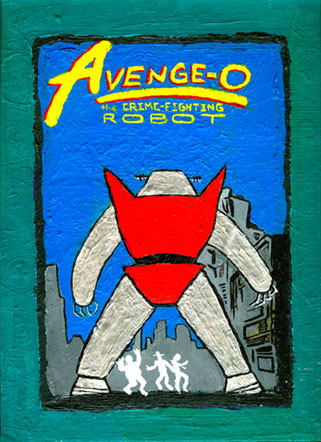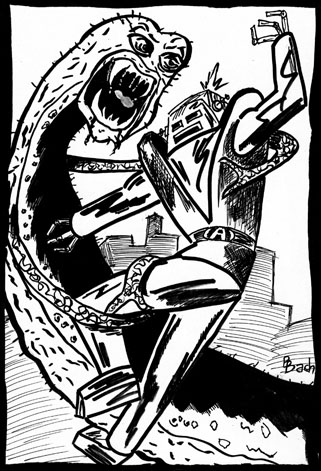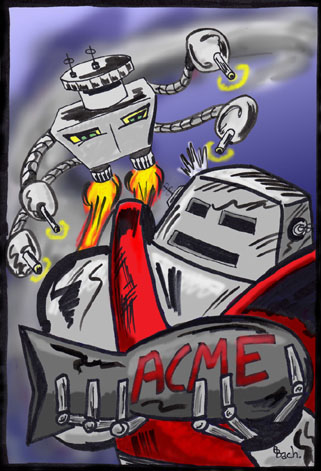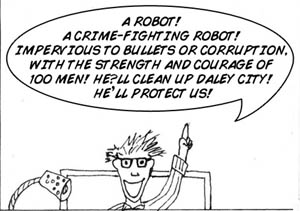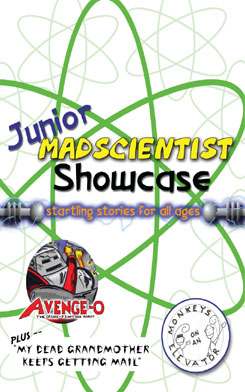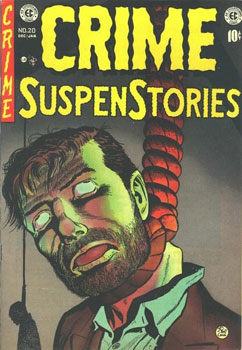This just in:
For those of you who thought I was making this up, here’s the official description for the Comics Studies Conference presentation at C2E2. There’s been another time change, so note it and the room number — then double check it when you get to the Con.
Saturday, April 17
4:00pm – 5:30pm, ROOM E266
SESSION #8: Crossing Cultures—Eric P. Nash (New York Times Magazine) examines the origins of Japanese manga in kamishibai or paper theater, including the Golden Bat, who was created in 1930 and may be the world’s first costumed superhero, predating Superman and Batman by nearly a decade. Charles Coletta (Bowling Green State University) examines how the war comics icon Sgt. Rock has been presented and reinterpreted as we moved further in time away from World War II. Bradley Weber (juniormadscientist.com) discusses the successes, failures, pitfalls — and potential — of translating William Shakespeare’s plays to the paneled page, from Classics Illustrated to the latest manga.
And so you can get more of your weekend planned, below is the complete list of other CSC programs. Don’t forget about the other worth-your-while, non-CSC sessions going on as well. Click here for that list.
As far as I know, I’m still doing two panels on Sunday:
Sunday, April 18 12:30pm — 1:30 PM ROOM E267
Graphic Novel Events For Your School Or Library: The Benefits And How-To’s Of Creating Clubs, Presentations, And Workshops
Sunday, April 18 3:00pm — 4:00pm ROOM E267
Getting Your Graphic Novel Collection Started: How To Select, Shelve, And Promote Great Lists For Kids, Tweens, Teens, And Adult Collections
These times and locations are fresh from the C2E2 site, so they should be good for the weekend. But it’s worth verifying on site.
Just sayin’.
Here’s the complete run of eleven CSC programs, as promised. Lots of fun stuff! See you all there!
***************************
Comics Studies Conference-Chicago 2010
First Annual Comics Studies Conference-Chicago
Held in conjunction with the Chicago Comics and Entertainment Expo (C2E2)
McCormick Place, Chicago, Illinois, April 16-18, 2010
Friday April 16
6:00-7:00, ROOM E267
COMICS STUDIES CONFERENCE SESSION #1: Teaching: Comics and The Comics Industry—Todd Allen (Columbia College Chicago) uses standard Internet business research techniques to explore the economics of webcomics and the business of comics on the Web. David Allan Duncan (Savannah College of Art and Design) investigates how the comics studio course trains future cartoonists despite industry uncertainty about the future of comics.
7:00-8:00, ROOM E267
COMICS STUDIES CONFERENCE SESSION #2
Empowerment—Josh Elder, (Reading With Pictures) investigates the use of comics for describing, understanding, and influencing students’ literacy skills through usage of comic books in classroom and library settings, investigations of the cognitive activities that underlie processing of comics, and development of educational interventions that rely on comics to foster interest and learning. Christopher Deis (DePaul University) focuses on the dynamics of using the graphic novel as a means of exploring politics, particularly focusing on national trauma with 9-11 and Marvel’s Civil War and the politics of race in Maus, Captain America’s the Truth, and Scalped.
8:00-9:00, ROOM E267
COMICS STUDIES CONFERENCE SESSION #3: Supervillains—Brian Miller (How I Became a Supervillain) explores in detail the definition of what it means to be a supervillain, across four levels of discussion—literary history, psychology, methaphysics, and ethics. Roman Colombo (Rosemont College) explores the role of the Joker as defined by the characteristics of the medieval morality play character Vice through representations of the character in both film and sequential art.
Saturday, April 17
11:00am – 12:30pm, ROOM E266
COMICS STUDIES CONFERENCE SESSION #4: Comics and Visual Language—Benjamin Frisch (Savannah College of Art and Design) analyzes how comics can be organized along the space-time spectrum—some comics are more spatial, and some comics are more temporal, depending on their utilization of space and time with regards to panel placement, pacing, and other criteria. Anthony Fisher (Savannah ¬¬¬¬¬¬¬College of Art and Design) elucidates the Theory Visual Relativity in Sequential Art provides that a mathematical rationale in measuring comics can aid in effective perception in sequential art. Côme Martin (Université Paris IV – Sorbonne) shows how comics without any sort of sounds or music are still impregnated with a musical rhythm and can be read like a musical partition.
12:45pm – 2:15pm, ROOM E266
COMICS STUDIES CONFERENCE SESSION #5: Subversive Comics
David Olsen (Saint Louis University) uses Derrida to challenge much of the prevailing logic of comics criticism by revealing that Watchmen deconstructs nothing—paradoxes and aporias have marked costumed heroes from the outset. Bryan Peters (Jefferson College) analyzes how cancer comics–Harvey Pekar and Joyce Brabner’s Our Cancer Year, Marisa Marchetto’s Cancer Vixen, and Miriam Engleberg’s Cancer Made Me a Shallower Person work as alternative, subversive writing, shifting the paradigm from hero to antihero to overthrow regimes of oppression and ignorance. Scott Morrison (Family Physicians of O’Fallon) traces the depiction of drugs in mainstream superhero comic books, from the Golden Age to the Modern Era.
1:45-2:45pm, E267
COMICS STUDIES CONFERENCE SESSION #6: Teaching and Comics—Steven Landry (Apalachee High School) and Becky Hasty (Apalachee High School) show how to use wordless sequential art narratives as mentor texts to foster student engagment, with Sara Varon’s Robot Dreams as the guiding example. Steven Givan (Fayette County Public Schools) demonstrates how to capture reluctant-student reading interest by using comics with new teaching styles. Continuing education certificates for teachers will be available for this panel.
2:30pm – 3:45pm, ROOM E266
COMICS STUDIES CONFERENCE SESSION #7: Superhero Justice—Psychologists Robin Rosenberg (Psychology of Superheroes) and Mikhail Lyubansky (University of Illinois), and attorney Amy Martin explore the nature of evil and how different supervillains’ life experiences and personal characteristics indicate various pathways to criminal behavior. The panel will also explore the implications that these various paths have for our notions of justice—and therefore how we think about the actions of the superheroes who fight the villains.
4:00pm – 5:30pm, ROOM E266
COMICS STUDIES CONFERENCE SESSION #8: Crossing Cultures—Eric P. Nash (New York Times Magazine) examines the origins of Japanese manga in kamishibai or paper theater, including the Golden Bat, who was created in 1930 and may be the world’s first costumed superhero, predating Superman and Batman by nearly a decade. Charles Coletta (Bowling Green State University) examines how the war comics icon Sgt. Rock has been presented and reinterpreted as we moved further in time away from World War II. Bradley Weber (juniormadscientist.com) discusses the successes, failures, pitfalls — and potential — of translating William Shakespeare’s plays to the paneled page, from Classics Illustrated to the latest manga.
5:45-6:45 COMICS STUDIES CONFERENCE SESSION #9: Superheroes—Josh Kopin (Bard College) examines how the death of Captain America in Ed Brubaker’s run on the character serves as a lens for examining the American nation and the meaning of Cap’s triumphs and tragedies. Mervi Miettinen (University of Tampere) examines and analyzes the subversive qualities located within the politics of the superhero, who takes on the executive power of the law without the legislative power and without the legitimacy of authority behind his actions.
Sunday, April 18
11:00am – 12:00pm, ROOM E266
COMICS STUDIES CONFERENCE SESSION #10: Forging Iron Man: The Psychological Construction of Iron Man’s Origin Story—Psychologist Robin Rosenberg (Superhero Origins: What Makes Superheroes Tick and Why We Want to Know) examines Iron Man’s various origin stories and reveals what they tell us about Tony Stark and his decision to become Iron Man.
12:15pm – 1:45pm, ROOM E266
COMICS STUDIES CONFERENCE SESSION #11: Visual Analysis
Steve Higgins (Lewis and Clark Community College) explores and analyzes the symbolic motifs that visually manifest the hardships each character endures in Jason Lutes’ Jar of Fools. Seth Alcorn (Catholic University of America) explores the way Alan Moore inverts the structure of decadance and aestheticsim in Watchmen, Promethea, and Lost Girls. Contributors to Gotham City 14 Miles Jim Beard, Mark Waid, Ed Catto, and Mike Johnson examine why the 1966 Batman TV series matters—to the character, to the fans, and to popular culture in general.

